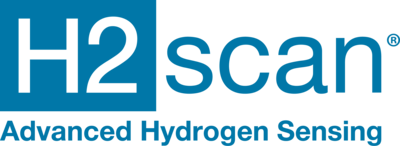H2scan BSS Catalog 2025 - Flipbook - Page 45

Ensuring Battery
Room Safety in Europe: Navigating
Standards and Best
Practices
Personal and Site Safety Measures
Insurance Company In昀氀uence
The success of any battery room safety program depends
on both human factors and physical infrastructure working
in harmony. This dual approach ensures comprehensive protection through both active and passive safety measures.
Beyond regulatory compliance, 昀椀nancial protection plays a
crucial role in comprehensive battery room safety programs.
Insurance providers serve as both stakeholders and safety
partners in developing robust protection measures. Insurance
providers signi昀椀cantly impact battery safety by:
Personal Protection Battery room operators must have
access to appropriate PPE, including gloves, goggles and
aprons. Training is crucial, with personnel required to understand electrical hazards, safe work practices and emergency procedures. Certi昀椀cation or refresher courses may be
necessary in high-risk areas.
Site Protections Battery room design must account for environmental challenges and safety requirements. Essential
elements include:
n
Electrolyte-resistant 昀氀ooring with appropriate containment systems
n
Hydrogen Detection Systems and Ventilation systems
designed to prevent hydrogen gas accumulation
n
Measures to prevent ignition of 昀氀ammable gases
n
Temperature and humidity control systems
n
Appropriate signage and warning systems
Record Keeping and Certi昀椀cations Documentation provides
the foundation for demonstrating safety compliance while
enabling continuous improvement of safety protocols. A
well-maintained record system serves as both a legal shield
and a tool for optimizing safety measures. Maintaining
detailed records of inspections, maintenance and incidents
is critical for demonstrating compliance. Certi昀椀cations from
recognized bodies further validate adherence to safety
standards.
Authorities Having Jurisdiction (AHJs) often incorporate
IEC 62485-2 principles into broader safety codes, ensuring
a consistent approach to inspections and audits. Staying
informed about AHJ requirements is vital for smooth compliance.
90000266
Assessing risks: Evaluating potential hazards and encouraging
safety improvements.
Enforcing compliance: Requiring adherence to standards as
part of coverage conditions.
Providing resources: Offering data sheets and recommendations for risk mitigation, such as those provided by FM Global.
Compliance with insurance requirements reduces the likelihood
of property damage, business interruptions and denied claims.
Key Takeaways for Battery Room Safety in Europe:
European battery room safety presents complex challenges, yet
structured approaches can help operators ensure compliance
and protect their facilities. Success requires attention to several
key areas:
n
n
n
Organizations must understand and navigate the multi-layered regulatory landscape spanning local, national and EU
requirements. Compliance with IEC standards, particularly
IEC 62485-2, provides a strong foundation for safety practices.
Safety measures encompass both human and technical
elements – from proper training and PPE use to robust ventilation systems and spill containment. Regular documentation of inspections, maintenance, and incidents demonstrates ongoing compliance while supporting continuous
improvement.
Working closely with insurance providers adds another
layer of protection through risk assessments and loss
prevention recommendations. These partnerships help
organizations prevent property damage and business interruptions while maintaining valid coverage.
pg.45
27215 Turnberry Lane, Unit A, Valencia, CA 91355, USA | +1 661-775-9575 | hello@h2scan.com | www.h2scan.com | ©2025 H2scan Corporation